Imagine walking into your favorite store, where they know your name, remember your last purchase, and suggest just the thing you need.
That's the heart of Customer Experience Management (CXM)—making every interaction with a business feel like a visit to a friendly neighborhood shop, even if it's online. CXM is about understanding customers like close friends and using that knowledge to create smoother, more personalized customer journeys.
Why does it matter in 2025? Because as the marketplace gets noisier, the businesses that make customers feel heard and valued are the ones that stand out. So, let's dive into the what and why of CXM, and find out how it can turn one-time buyers into lifelong fans.
Understanding Customer Experience Management
Defining Customer Experience Management
Customer Experience Management (CXM) is the practice of designing and reacting to customer behavior to meet or exceed their expectations, thereby increasing customer satisfaction, loyalty, and advocacy. It is a strategy that requires a holistic approach, focusing on the entire customer journey a person takes with a brand rather than on individual transactions or touchpoints.
CXM involves a deeper understanding of customer emotions and needs, creating positive interactions, and building a relationship that extends beyond the purchase. The ultimate goal is to drive brand loyalty, not only to retain customers but to convert them into brand ambassadors.
The Evolution of Customer Experience
The concept of customer experience has evolved significantly over the years, driven by changes in consumer behavior and technological advancements. In the early days of commerce, customer experience was a direct, personal interaction between a buyer and a seller. However, as markets expanded and technology advanced, the distance between businesses and consumers grew, leading to a more transactional relationship.
With the advent of the internet and social media, the balance of power shifted towards the customer. Businesses now operate in a customer-centric era where consumers have a plethora of choices and the ability to share their experiences with a global audience. This has necessitated a more sophisticated approach to managing customer experiences, as a single negative review can have far-reaching consequences. Organizations have recognized the need to not only track customer satisfaction but also actively manage the customer's holistic experience with their brand.

Key Components of a Good Customer Experience Management
For effective customer experience management you need to consider several key components:
1. Customer Insights: Gathering and analyzing customer data on preferences, behaviors, and feedback to gain a deep understanding of what customers truly want and need.
2. Customer Journey Maps: Creating detailed maps of the customer journey to understand the various touchpoints and interactions customers have with a brand and identifying the moments that matter most.
3. Emotional Engagement: Recognizing the emotional aspects of customer interactions and striving to connect with customers on an emotional level to foster loyalty and positive experiences.
4. Personalized Experiences: Using insights to tailor experiences to individual customers, making them feel valued and understood.
5. Consistency: Ensuring that the customer experience is seamless and consistent across all channels and touchpoints, from in-store to online.
6. Collecting Feedback and Continuous Improvement: Implementing mechanisms to capture customer feedback and using it to continuously improve the customer experience.
7. Cross-Functional Collaboration: Aligning various departments and teams within the organization to work together towards
The Impact of Customer Experience Management on Business
How CXM Shapes Customer Perceptions
Customer Experience Management significantly influences how customers perceive a brand. Every interaction, from browsing a website to speaking with personalized customer service, shapes the customer's view and feelings towards a company.
A positive experience can lead to a favorable perception, which is critical in a competitive marketplace where customers have ample choices. CXM ensures that businesses deliver personalized experiences that are consistent with their brand values and promises and, at the same time, foster a positive brand image and increase customer satisfaction.
The Role of CXM in Customer Retention
CXM is crucial in retaining customers, as it focuses on providing exceptional experiences that encourage customers to continue doing business with a brand. By understanding and meeting customer needs, addressing issues promptly, and going above and beyond to exceed expectations, companies can build strong, lasting relationships with their customers. Loyal customers are less likely to switch to competitors and are more likely to make repeat purchases, which is vital for long-term business success.
Utilizing survey software tools for running customer satisfaction surveys or tracking customer effort scores (CES) can help businesses identify areas for improvement and ensure they are meeting customer expectations.
Quantifying the Business Benefits of Managing Customer Experience Effectively
The benefits of effective CXM can be measured in various ways. Customer experience directly impacts key business metrics such as customer lifetime value (CLV), churn rate, and word-of-mouth referrals. By enhancing customer experience, businesses can see a rise in customer loyalty, which translates into increased revenue and reduced costs associated with acquiring new customers.
Online surveys, can be instrumental in measuring customer satisfaction (CSAT) and loyalty, providing not only quantitative, but also qualitative data that can be used to calculate the return on investment in CXM initiatives. Furthermore, companies can track improvements in customer retention rates and customer spending, which are strong indicators of the financial impact of managing customer experience effectively.
Best Practices in Customer Experience Management
Building a Customer-Centric Culture
Creating a customer-centric culture is fundamental to successful Customer Experience Management (CXM). This involves embedding customer-focused values and behaviors at every level of the organization. Employees should be empowered and encouraged to prioritize customer needs and consider the customer impact in all decision-making processes. Training and development programs can instill the importance of customer experience, ensuring that every team member understands their role in delivering exceptional service. By fostering a culture that celebrates customer-centric actions, businesses can ensure that providing outstanding customer experiences becomes second nature to their workforce.
Continuous Improvement in CXM
Customer Experience Management is not a one-time initiative but an ongoing process of learning, adapting, and enhancing the customer experience. Continuous improvement requires regularly collecting and analyzing customer feedback to identify areas for enhancement.
You can employ feedback tools to conduct customer satisfaction surveys, NPS surveys, and customer effort score surveys, which provide actionable insights. These insights can drive iterative changes to products, services, and customer interactions, ensuring that the business evolves with customer expectations and market trends.
Benefits You Can Draw Out Of Customer Experience Management
In today's customer-centric business landscape, Customer Experience Management (CXM) has emerged as a pivotal strategy for companies seeking to build a loyal customer base and stand out from the competition. The emphasis on delivering a superior customer experience is not just about meeting basic service expectations but about exceeding them in a way that leaves a lasting positive impression on customers. This focus on customer experience yields a multitude of benefits that can have a profound impact on a business's success. From enhancing individual customer interactions to driving the overall growth of the company, the advantages of effective CXM are extensive and multifaceted. In the following sections, we will delve into the specific benefits that businesses can reap from investing in robust Customer Experience Management practices.
Increased Customer Satisfaction
Customer Experience Management (CXM) directly targets the factors that contribute to customer satisfaction. By understanding and meeting customer expectations, addressing their concerns promptly, and creating a seamless journey across all touchpoints, companies can significantly enhance customer satisfaction. Satisfied customers are more likely to become repeat customers and can become powerful advocates for the brand.
Enhanced Customer Loyalty
A well-executed CXM strategy can lead to stronger customer loyalty. When customers have consistently positive experiences with a brand, they develop a sense of trust and are more likely to stick with the brand over time, even in the face of competitors' offers. Loyal customers often contribute to a larger portion of a company's revenue, as they tend to make more frequent purchases and are less price-sensitive.
Improved Customer Retention Rates
Retaining existing customers is generally more cost-effective than acquiring new ones. Through effective CXM, businesses can improve their customer retention rates by providing exceptional experiences that encourage customers to continue choosing their brand. Higher retention rates can lead to increased profitability, as the cost of selling to existing customers is typically lower than the cost of acquiring new ones.
Increased Word-of-Mouth Referrals
Positive customer experiences can lead to increased word-of-mouth referrals, which are a powerful and cost-effective marketing tool. Satisfied customers are more likely to recommend a brand to friends, family, and colleagues. These personal recommendations can drive new customer acquisitions without the associated marketing costs.
Competitive Differentiation
In competitive markets, a strong CXM program can be a key differentiator. By delivering superior customer experiences, businesses can stand out from competitors and attract customers based on the quality of their service. This differentiation can be crucial for winning over customers who are making decisions between multiple brands.
Higher Revenue and Profitability
The culmination of increased satisfaction, loyalty, retention, and word-of-mouth referrals often leads to higher revenue and profitability. Customers who have great experiences are likely to spend more, and businesses can capitalize on the goodwill generated by their CXM efforts to upsell and cross-sell products and services.
Reduction in Customer Churn
Effective CXM can help reduce customer churn by proactively addressing the issues that lead to customer turnover. By identifying and resolving pain points in the customer journey, companies can prevent dissatisfaction and the loss of customers to competitors.
Essential Strategies for Managing Customer Experience Management Effectively
Gathering and Utilizing Customer Feedback
Collecting customer feedback is a cornerstone of effective Customer Experience Management (CXM). It provides businesses with the insights needed to understand customer preferences, pain points, and expectations. To gather this valuable information, companies can employ various methods, such as surveys, feedback forms, and direct customer interviews.
Survey tools offer versatile ways for creating and distributing surveys that can capture customer feedback across the entire customer journey. For instance, post-purchase surveys can gauge customer satisfaction with a product or service, while periodic NPS (Net Promoter Score) surveys can measure customer sentiment and predict business growth. The feedback obtained through these surveys can inform business decisions, drive product improvements, and shape seamless customer experience.
Implementing Personalization in Customer Interaction
Personalization is key to making customers feel valued and understood. By tailoring interactions based on customer data, companies can create more meaningful and relevant experiences. This can range from addressing customers by their names in communications to recommending products based on past purchases or browsing history.
To achieve personalization, businesses need to collect and analyze customer data to segment their audience and create customer profiles. These profiles help in delivering targeted marketing messages, customizing offers, and providing personalized customer support, which in turn enhances the overall customer experience.
Leveraging Technology to Enhance Customer Experience
Technology plays a pivotal role in modern CXM strategies. With the right tools, businesses can streamline processes, provide convenient service options, and foster better customer relationships. For example, CRM (Customer Relationship Management) systems can help manage customer interactions and data throughout the customer lifecycle, improving customer service and retention.
Additionally, AI and machine learning can be harnessed to predict customer needs, automate responses, and provide 24/7 support through chatbots. Technology can also facilitate omnichannel experiences, ensuring customers receive a consistent and seamless experience whether they interact with a brand online, in-store, or through a mobile app. By integrating technology into your customer experience management strategy, you can deliver faster, more efficient, and more personalized customer experiences.
Best Customer Experience Management Software for 2024
Leveraging the right Customer Experience Management software is crucial for businesses aiming to deliver exceptional service. These tools not only help in understanding and enhancing customer interactions across various touchpoints but also provide valuable insights that can drive strategic improvements.
Survicate
Survicate is an effortless feedback collection tool that allows businesses to gather actionable insights from their customers quickly and efficiently. With its user-friendly interface, Survicate enables companies to create and distribute surveys across multiple channels, including email, web, in-product, and mobile.
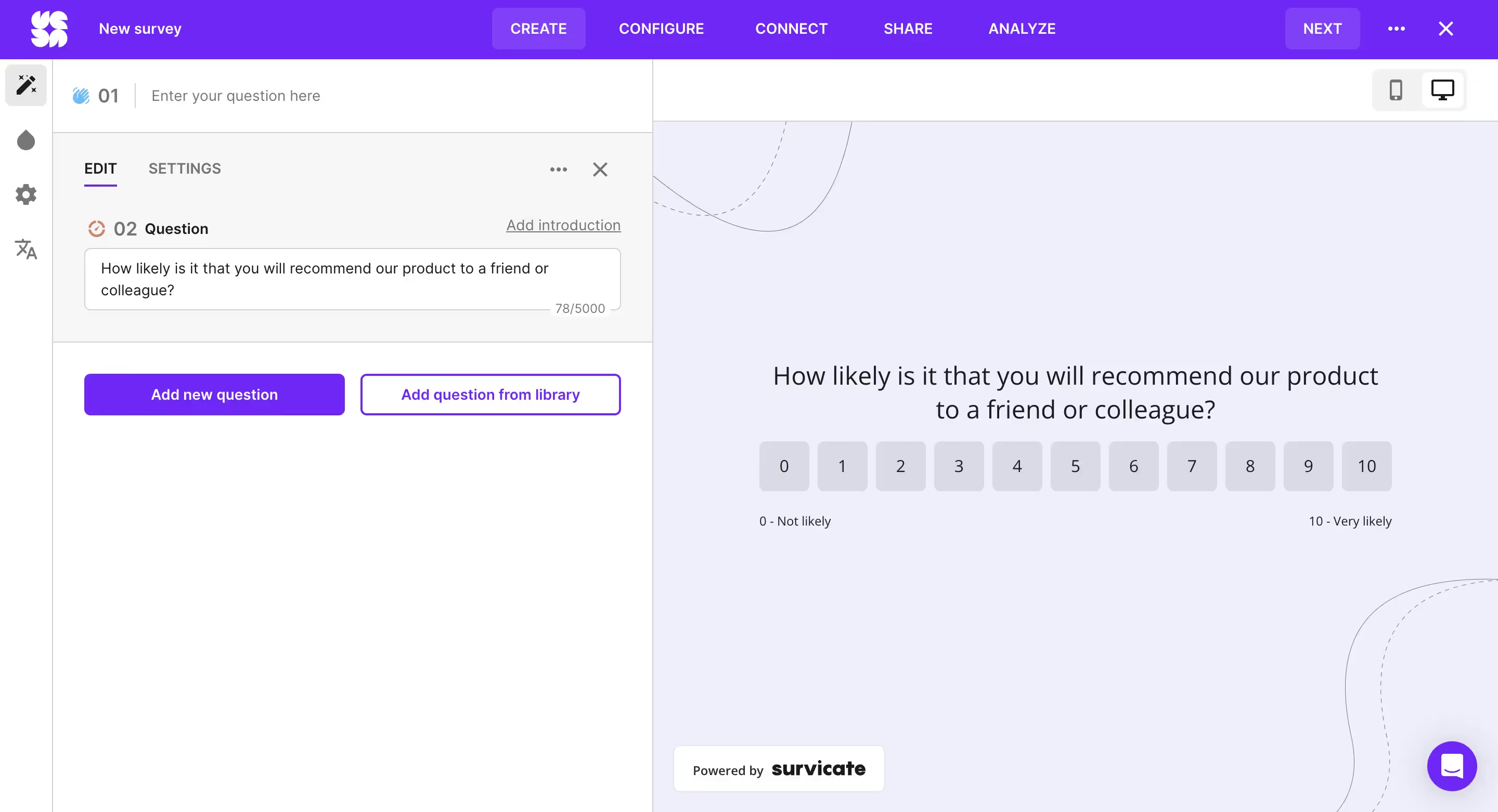
Survicate also offers features powered by AI—you can, for example, create surveys with AI, and automatically categorize qualitative data into topics to speed up the analysis.
Its analytics capabilities help businesses understand customer feedback in depth, making it easier to make data-driven decisions to enhance the customer experience.
HubSpot Service Hub
HubSpot Service Hub is an integral component of HubSpot's comprehensive Customer Relationship Management (CRM) platform, designed to deliver outstanding customer service.
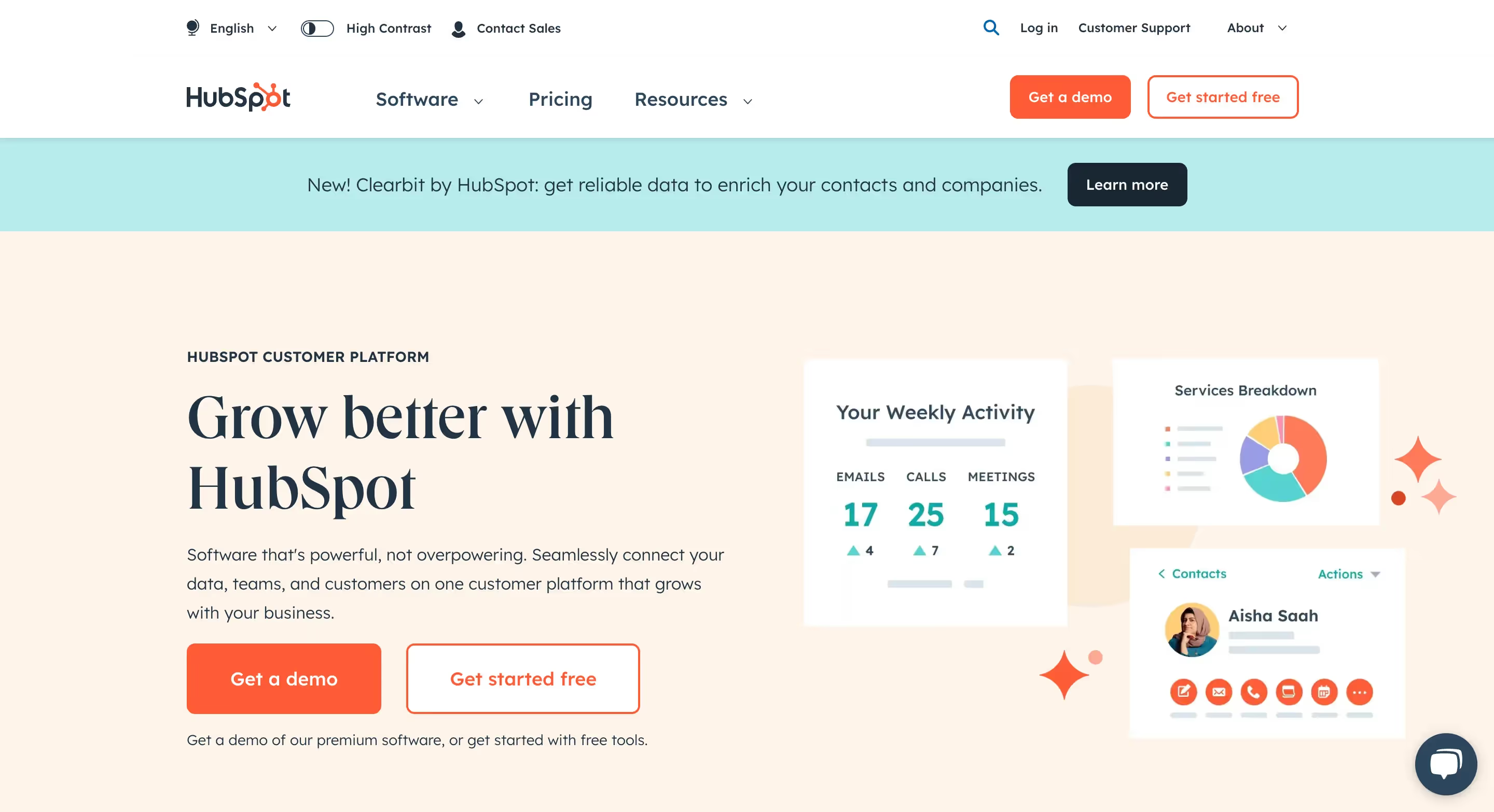
It offers a range of features such as ticketing, live chat, and customer feedback tools to help businesses manage customer inquiries and issues efficiently. The Service Hub also provides detailed reports and insights, enabling companies to track and enhance their customer service performance.
Zendesk
Zendesk is widely recognized for its customer service and support solutions, but it also offers robust Customer Experience Management capabilities.
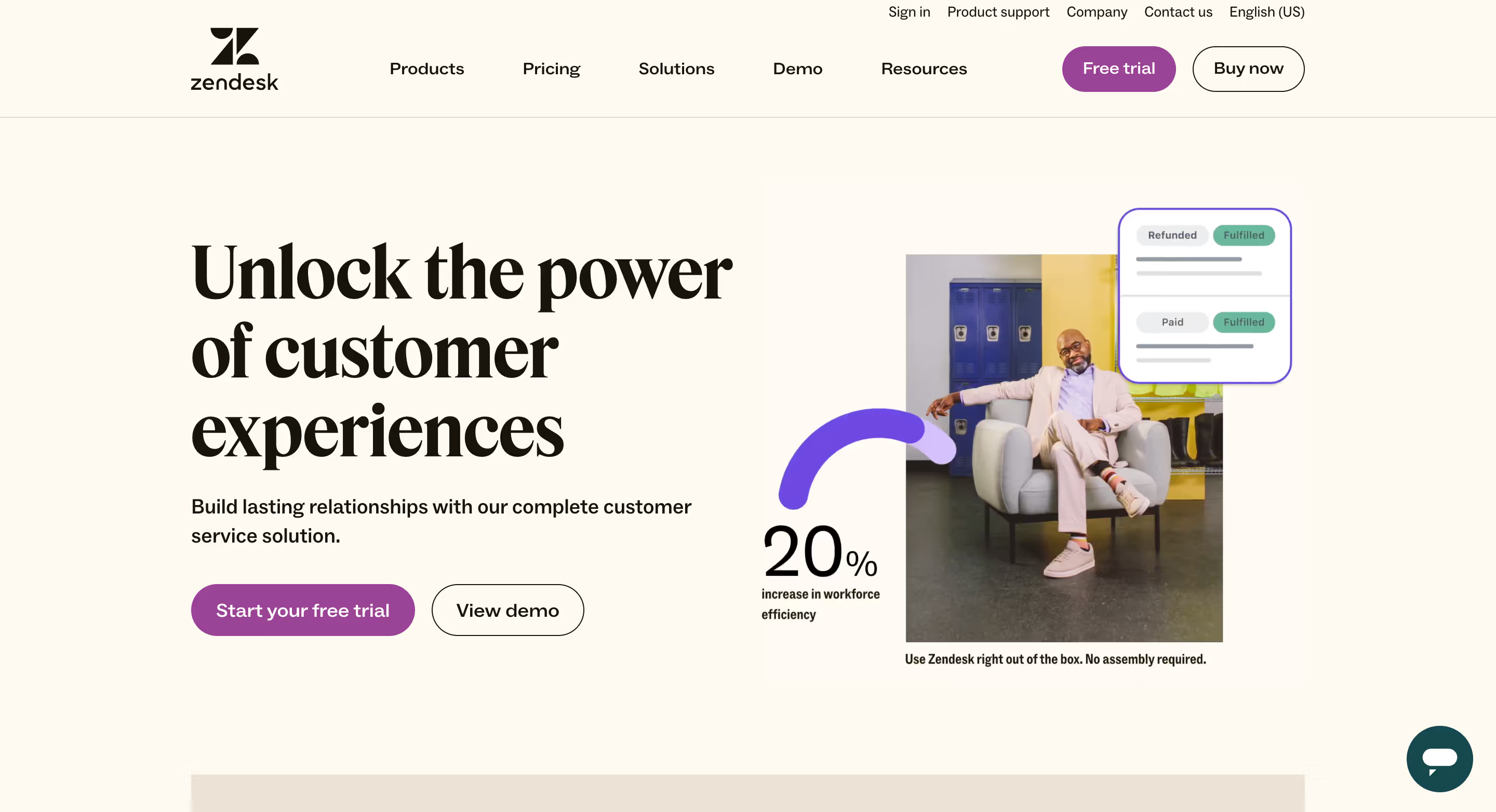
It allows businesses to build seamless support experiences and manage customer interactions across multiple channels. With Zendesk, companies can create a unified view of the customer, track their journey, and deliver personalized support.
Adobe Experience Cloud
Adobe Experience Cloud offers a suite of tools designed to help businesses manage customer experiences at scale.

It combines customer data and content to deliver consistent, personalized experiences across every channel. Adobe's powerful analytics, targeting, and optimization tools enable businesses to understand their customers and deliver experiences that resonate.
Freshdesk
Freshdesk is a user-friendly customer support software that helps businesses manage conversations with customers across various channels.
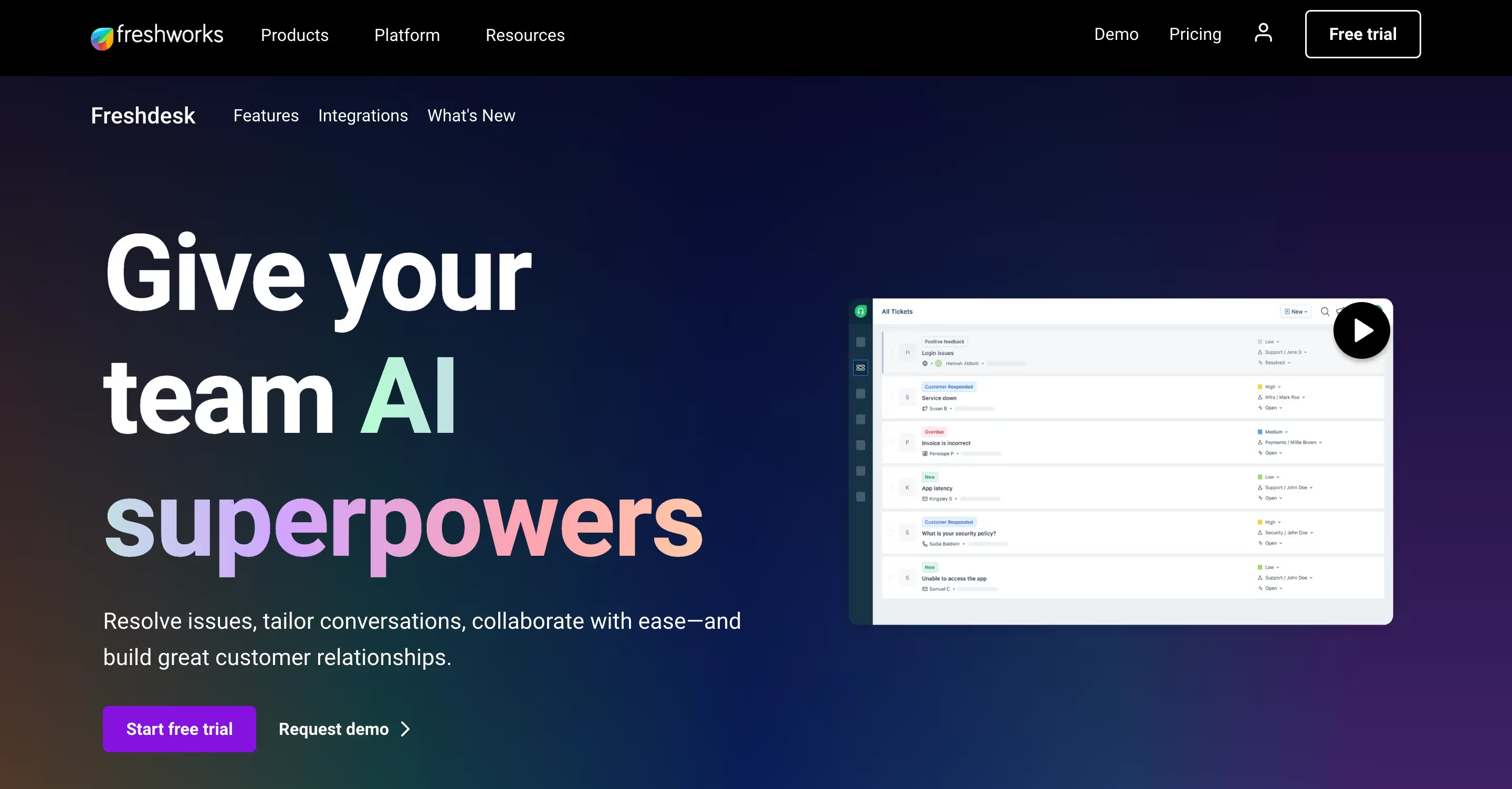
It offers a multi-channel helpdesk, a knowledge base, and automation tools to streamline support processes. Freshdesk's gamification features also encourage support agents to deliver their best performance, ensuring a positive experience for customers.
Kustomer
Kustomer is a top-tier customer service customer relationship management (CRM) platform designed for modern businesses.
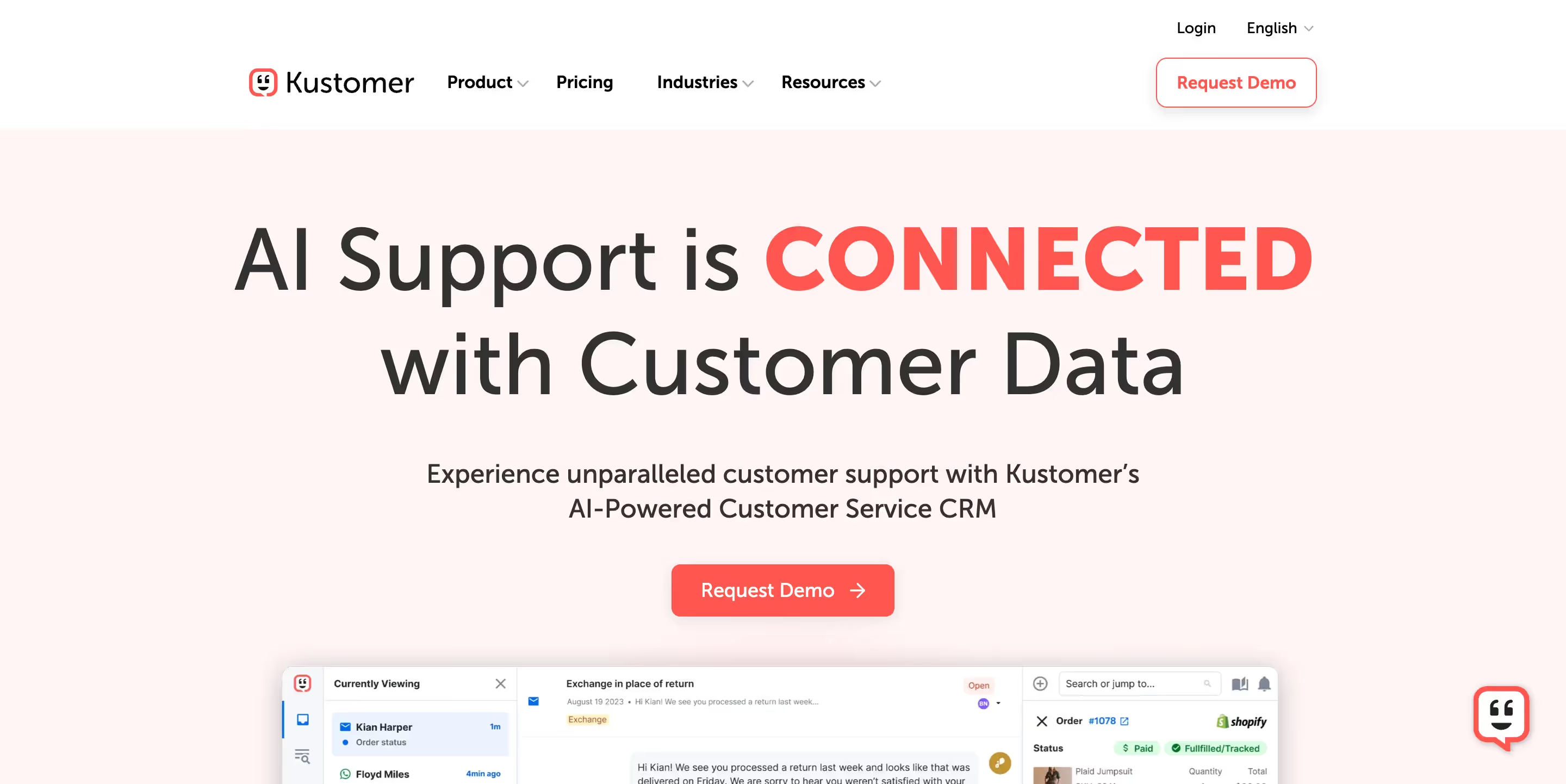
It centralizes customer data from various channels into a single timeline view, enabling support teams to deliver informed, empathetic service. Kustomer's platform is built to scale with businesses as they grow, making it a versatile choice for companies of all sizes.
Staying Ahead in a Rapidly Changing Customer Experience Landscape
Understanding and managing the customer experience is not just a trend but a fundamental aspect of business success in the modern marketplace. The rapidly changing customer experience landscape demands agility, foresight, and a commitment to continuous improvement.
Any successful customer experience management strategy begins with truly getting to know your customers and the easiest way is to start with online surveys. This is where tools like Survicate come into play, offering an intuitive platform for gathering customer insights. By leveraging the power of feedback, businesses can make informed decisions that resonate with their customers, fostering loyalty and driving growth.
Don't miss this opportunity to connect with your customers on a deeper level and tailor your services to meet their evolving needs.
Try Survicate—start your free 10-trial today and take the first step towards transforming your customer experience management approach.








.webp)
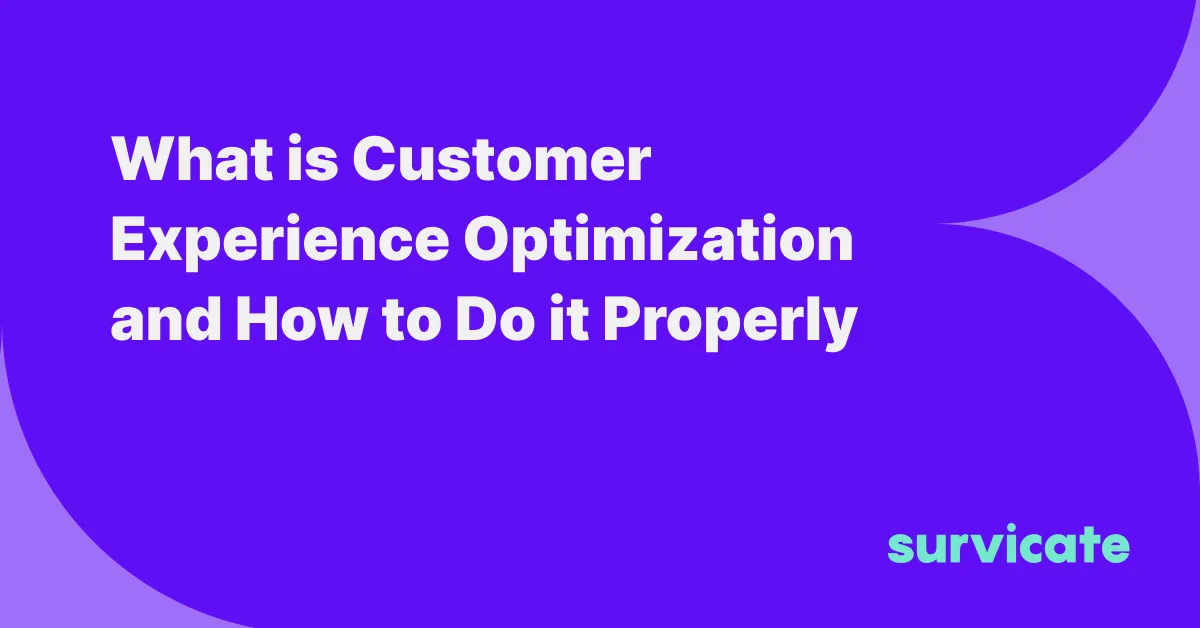

.webp)

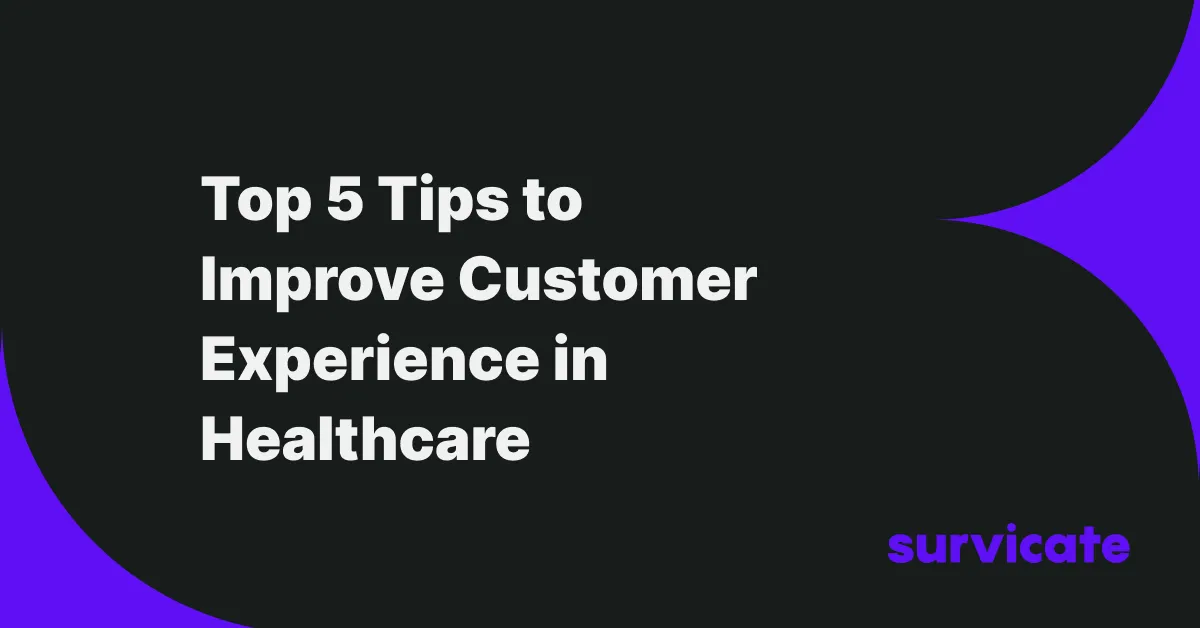
.svg)

.svg)



